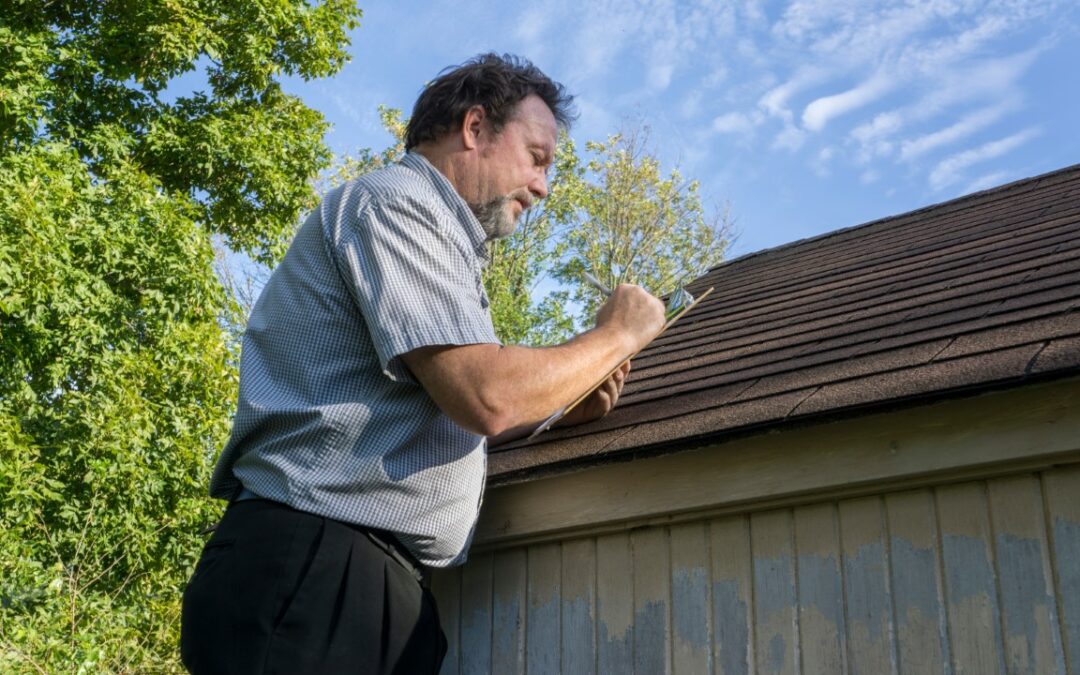Are you tired of feeling like a helpless victim when it comes to hailstorm damage? Well, we’re here to tell you that you’re not alone. We’ve got all the essential information you need to address this issue head-on.
From assessing the damage to choosing the right materials and hiring a professional contractor, we’ve got you covered.
So, join us on this journey as we navigate the world of roof replacement and take control of our homes once and for all.
Key Takeaways
- Visually inspect the roof for visible signs of damage and conduct a thorough assessment to identify any hidden damage.
- Consult with roofing professionals to determine the best course of action and discuss insurance coverage for repairs.
- Regularly inspect the roof to detect roofing issues early on and address them promptly to prevent further damage.
- When choosing roofing materials, consider the durability and longevity of metal roofs and the affordability and variety of styles of shingle roofs.
Assessing the Hailstorm Damage
To assess the hailstorm damage, we’ll begin by examining the extent of our roof’s condition.
It’s crucial to evaluate the impact of the hailstorm on our roof to determine the necessary repairs and insurance coverage. First, we’ll visually inspect the roof for any visible signs of damage, such as cracked or missing shingles, dented gutters, or damaged flashing.
Next, we’ll conduct a thorough assessment by climbing onto the roof and examining it up close. This will enable us to identify any hidden damage that may not be immediately apparent.
Once we’ve assessed the extent of the damage, we can begin exploring our repair options. It’s essential to consult with roofing professionals to determine the best course of action and discuss insurance coverage for the repairs.
Identifying Roofing Issues
Now, let’s shift our focus to identifying roofing issues.
It’s crucial to be aware of common problems that can arise after a hailstorm. By knowing what to look for, we can detect these issues early on and take necessary action to prevent further damage.
In this section, we’ll discuss the most common roofing problems and the methods for detecting them.
Common Roofing Problems
We often encounter common roofing problems that require identifying and addressing the underlying issues. Proper roofing maintenance is essential to prevent these problems from occurring or worsening over time. Regular inspections can help identify issues such as leaks, missing or damaged shingles, and clogged gutters.
DIY repairs can be done for minor issues, such as replacing a few missing shingles or cleaning out the gutters. However, it’s important to know when to call a professional for more complex problems. Ignoring roofing issues can lead to more severe damage, such as water leaks, mold growth, and structural instability.
Early Detection Methods
One of the most important aspects of maintaining a roof is early detection of roofing issues. By identifying problems early on, homeowners can prevent further damage and costly repairs.
When it comes to hailstorm damage, there are specific detection techniques that can help identify potential issues. Regular roof inspections are crucial in spotting any signs of damage caused by hailstorms. These inspections should be conducted by professionals who are trained to look for specific indicators such as dented or cracked shingles, granule loss, and punctures.
In addition to visual inspections, homeowners can also use technology such as drones or satellite imagery to assess the condition of their roofs. By implementing these detection methods, homeowners can stay proactive in addressing roofing issues and ensure the longevity of their roofs.
Choosing the Right Roofing Materials
When considering roof replacement after hailstorm damage, it’s important to carefully choose the right roofing materials. One key decision is whether to go with metal or shingle roofing.
Metal roofs are known for their durability and longevity, often lasting 50 years or more. They’re resistant to hail damage and can withstand strong winds.
On the other hand, shingle roofs are more affordable upfront and offer a wide range of styles and colors to choose from. However, they may require more frequent repairs and replacement compared to metal roofs.
When it comes to cost, metal roofs generally have a higher upfront cost but require less maintenance and a longer lifespan, making them a cost-effective option in the long run.
Ultimately, the choice between metal and shingle roofing materials depends on your budget, preferences, and long-term goals for your home.
Hiring a Professional Roofing Contractor
Before we dive into the essentials of hiring a professional roofing contractor, it’s important to emphasize the significance of selecting the right roofing materials for your hailstorm-damaged roof. Once you have chosen the appropriate materials, it’s time to find reputable contractors who can handle the job.
When it comes to finding reputable contractors, it’s crucial to do thorough research. Look for contractors with a proven track record, positive customer reviews, and proper licensing and insurance. Don’t hesitate to ask for references and examples of their previous work.
Additionally, obtaining cost estimations from multiple contractors is essential. This will allow you to compare prices and ensure that you’re getting a fair deal. Remember, hiring a professional roofing contractor is an investment in the longevity and durability of your roof, so take the time to find the right one for the job.
Understanding the Insurance Claims Process
To further address hailstorm damage, let’s delve into understanding the insurance claims process.
When it comes to insurance coverage for hail damage, it’s crucial to familiarize yourself with the specific terms and conditions outlined in your policy. Most insurance policies cover hailstorm damage, but it’s essential to review your policy to understand the extent of the coverage provided.
Additionally, it’s important to gather all necessary documentation to support your claim. This may include photographs of the damage, receipts for repairs, and any other relevant documentation required by your insurance company. By having all the necessary documentation in order, you can streamline the claims process and increase the likelihood of a successful outcome.
Remember to consult your insurance provider and follow their specific documentation requirements to ensure a smooth and efficient claims process.
Scheduling the Roof Replacement
When it comes to scheduling a roof replacement after hailstorm damage, there are two key factors to consider: timing and availability, as well as weather and preparation.
Timing and availability are crucial because roofing contractors may have a high demand for their services after a hailstorm, so it’s important to schedule the replacement as soon as possible.
Weather also plays a significant role as it can affect the timeline and safety of the installation. Proper preparation ensures a smooth and efficient process.
Timing and Availability
To ensure a smooth and efficient roof replacement process, we need to carefully consider the timing and availability of scheduling the project.
Timing plays a crucial role in the roof replacement process, as it affects the availability of materials and labor. It’s important to schedule the project during a time when roofing materials are readily available and can be delivered promptly. Additionally, considering the availability of skilled roofing contractors is essential to avoid any delays or complications. To determine the most suitable timing, factors such as weather conditions and the contractor’s workload should be taken into account.
Furthermore, cost estimation is an integral part of scheduling the roof replacement. By accurately estimating the costs associated with materials, labor, and any additional services, you can ensure that the project stays within budget and progresses smoothly.
Weather and Preparation
Considering the timing and availability discussed earlier, we must now address the impact of weather and the necessary preparation for scheduling the roof replacement.
Weather plays a crucial role in the successful completion of a roof replacement project. It’s important to consider the forecasted weather conditions to ensure that the work can be carried out safely and effectively. Adverse weather conditions such as heavy rain, strong winds, or extreme temperatures can hinder the progress of the project and compromise the quality of the installation. Therefore, it’s essential to plan the roof replacement during a period of stable weather.
Additionally, proper preparation is key to a successful roof replacement. This includes conducting a thorough inspection of the existing roof, identifying any underlying issues, and performing necessary roof maintenance tasks to ensure the new roof can be installed properly.
Maintaining the New Roof for Longevity
To ensure the longevity of our new roof, we must prioritize regular maintenance and inspections. Implementing preventive measures and conducting regular inspections are key to identifying and addressing potential issues before they worsen.
It’s important to schedule inspections at least twice a year, ideally in the spring and fall, to assess the condition of the roof and identify any signs of damage or wear. During these inspections, we should pay close attention to the condition of the shingles, flashings, and gutters.
Any signs of cracking, curling, or missing shingles should be promptly addressed. Additionally, it’s crucial to keep the roof clean and clear of debris to prevent clogging of gutters and downspouts.
Conclusion
In conclusion, addressing hailstorm damage requires a thorough assessment of the roofing issues. This involves inspecting the extent of the damage and identifying any underlying problems. Once the assessment is complete, it is important to choose suitable materials for the roof replacement. This includes selecting materials that are durable and can withstand future hailstorms.
Another important step is hiring a professional contractor to carry out the roof replacement. A professional contractor will have the necessary skills and expertise to ensure that the replacement is done correctly and efficiently. They will also be able to guide the best materials to use for your specific situation.
Understanding the insurance claims process is also crucial when addressing hailstorm damage. It is important to know what is covered by your insurance policy and how to file a claim. This will help ensure that you are properly compensated for the damage and can proceed with the necessary repairs.
Once the insurance claim is approved, it is important to schedule the roof replacement as soon as possible. Delaying the replacement can lead to further damage and increased costs. It is important to work with your contractor to establish a timeline for the replacement that works for both parties.
Finally, maintaining the new roof is essential for its longevity. This includes regular inspections and maintenance to prevent any issues from arising. It is important to keep the roof clean and clear of debris and to address any minor issues before they escalate into major problems.
In conclusion, addressing hailstorm damage requires a thorough assessment, choosing suitable materials, hiring a professional contractor, understanding the insurance claims process, scheduling the roof replacement, and maintaining the new roof for longevity. Taking these essential steps will ensure the safety and durability of your home, protecting your family and belongings from nature’s unpredictable wrath.

